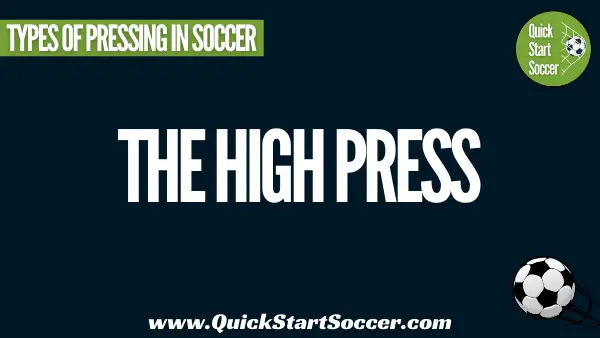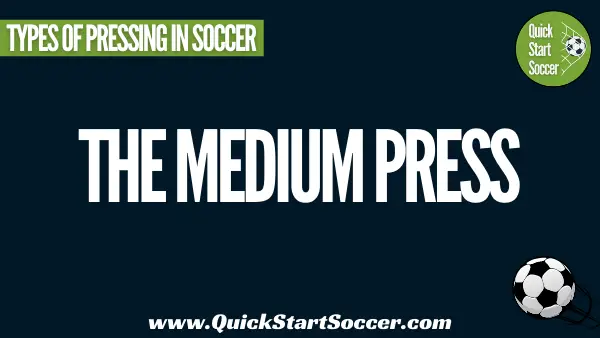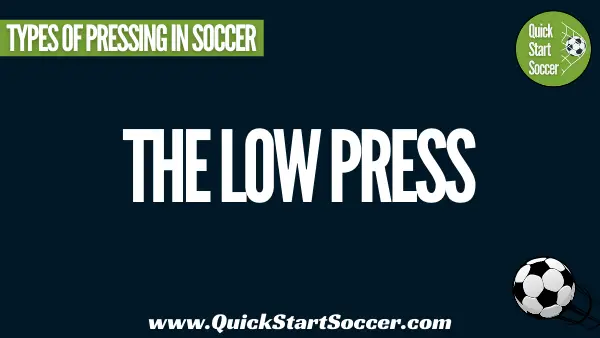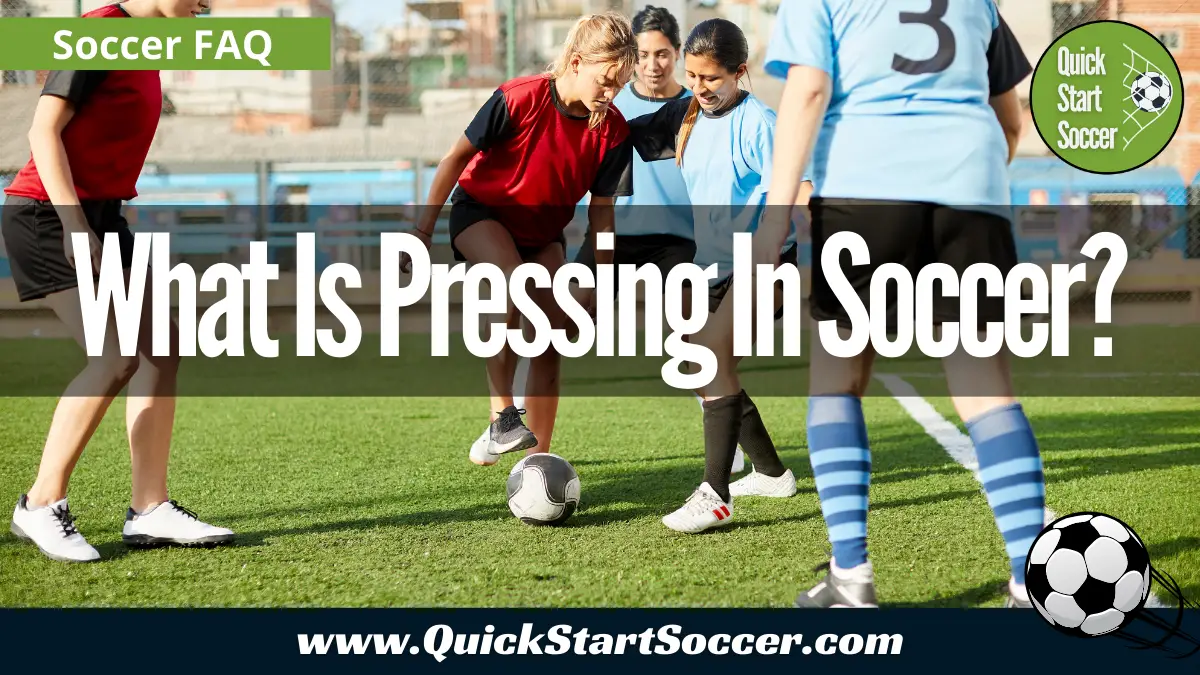Pressing In Soccer | Types And Triggers
Pressing in soccer has become an increasingly important and talked about aspect of the game in recent years with many of the world’s top coaches frequently lauded for coaching high pressing teams. In this post, we will detail exactly what pressing in soccer is, the different types of pressing, and the different pressing triggers that players should recognize if they are going to press the ball.
What Is Pressing In Soccer?
Pressing in soccer refers to the collective team effort to put pressure on the ball when it is in possession of the opposition. The goal of a team press is to force your opponent to make a mistake so you can win the ball back and start your own attack. A good team press will often involve a group of players that increasingly limit the time and space that their opponents have on the ball. Although pressing is usually done in groups, one player (the first defender) usually starts the press by closing the ball down after seeing a trigger or visual cue on the field.
Types Of Pressing In Soccer
The three main types of pressing in soccer are The High Press, The Medium Press (or Midfield Press), and The Low Press. Each of these presses takes place in a different part of the field. Let’s take a look at each of these types of pressing in soccer.
The High Press

A High Press is a type of pressing in soccer that takes place high up in the pitch, inside the opponent’s half. The purpose of a high press is to put pressure on the opposing team with the aim of winning back possession of the ball quickly and as close to the opposing team’s goal as possible.
The main advantage of a high press is that if a team does win possession of the ball, they are in a good position to create chances and score a goal. The biggest disadvantage of a high press, however, is that if a team fails to win back the ball, there is more space behind them for the opposing team to exploit. For this reason, teams that employ a high press often have to have a high level of fitness because not only must players be able to quickly switch to defending if the opposing team counter-attacks, they must also maintain energy throughout the game. This is also sometimes referred to as defending in a high block.
The Medium Press

The Medium Press is a type of pressing in soccer that takes place in the middle or central third of the field. For this reason, you may also hear the medium press referred to as the midfield press. Teams that engage in a medium press often allow their opponents to possess the ball in their own defensive third in the knowledge that it is far away from the goal they are trying to defend.
The main advantage of a medium press is that players have more time to collectively find their defensive shape, and if they do win the ball back they are still relatively close to their opponent’s goal. The main disadvantage of a medium press is that by allowing your opponent to have the ball initially, you give them the opportunity to control the rhythm of the game and build out from the back. This is also sometimes referred to as defending in a medium block.
The Low Press

The Low Press is a type of pressing in soccer that involves a team sitting very deep & close to their own goal and allowing their opponents to attack before engaging and trying to win the ball back. Teams who defend in a low block have to rely on high organization and defensive discipline in their own half and be patient in not having the ball for long periods of the game. The main advantage of a low press is that your opponents commit more people forward and if you do win the ball back there is plenty of room to counter-attack. The disadvantage of a low block is that a mistake defending near your own goal can often lead directly to a goal. The low press is also sometimes referred to as defending in a low block.
Soccer Pressing Triggers
In soccer, the term ‘pressing triggers’ refers to a set of circumstances or visual cues that indicate to players that a team press should be initiated. A press is often initiated after a defender recognizes one of these pressing triggers. No matter if a team is playing as a high, medium, or low pressing team, it is important players know and can recognize these pressing triggers. Here are the most common soccer pressing triggers:
Poor Touch
If an attacker who is receiving the ball makes a bad touch, they will likely be off-balance and struggling to gain control of the ball. This would present a good opportunity to initiate a press to win back the ball.
Weak Pass
A slow or under-hit pass made by an attacker should always trigger a press as this is a great chance to intercept the pass and win back the ball.
Difficult Pass
An attacker may find it difficult to control a long or lofted pass from another attacker. This should trigger a press as it presents a chance to win back the ball should the attacker poorly control the pass.
Attacker Facing Their Own Goal
When a player is facing their own goal when receiving the ball it can be difficult for that player to turn around and take the ball forward. This presents an opportunity to put pressure on the attacker and try and win back the ball.
Weak Foot
A player receiving the ball on their weak foot could be a pressing trigger because there is more chance for the player to make a bad first touch. This pressing trigger can be a little difficult for players to spot, especially if they are meeting the opposing team for the first time.
Limited Space
A player with the ball close to the byline or somewhere with limited space to move presents an opportunity to win back the ball as the player may find it difficult to move into space or pass to an opponent.
Weak Player
A player receiving the ball who has been identified as being a weak player can be a pressing trigger as it may be easier to win back the ball from this player after initiating a press.
Coaching Resources
Thanks for reading. I hope you found this article useful. Before you go, be sure to check out our free soccer drills for activities you can use in your next soccer coaching session.


